As technology continues to evolve, businesses are increasingly relying on artificial intelligence (AI) and data-driven solutions to stay competitive. One of the most exciting developments in this arena is the use of Retrieval-Augmented Generation (RAG) in question answering systems. RAG is a cutting-edge approach that combines the strengths of retrieval-based and generative models to deliver highly accurate and contextually rich responses. For technology leaders looking to harness the power of AI, understanding and implementing RAG can be a game-changer.
The Evolution of Question Answering Systems
![]()
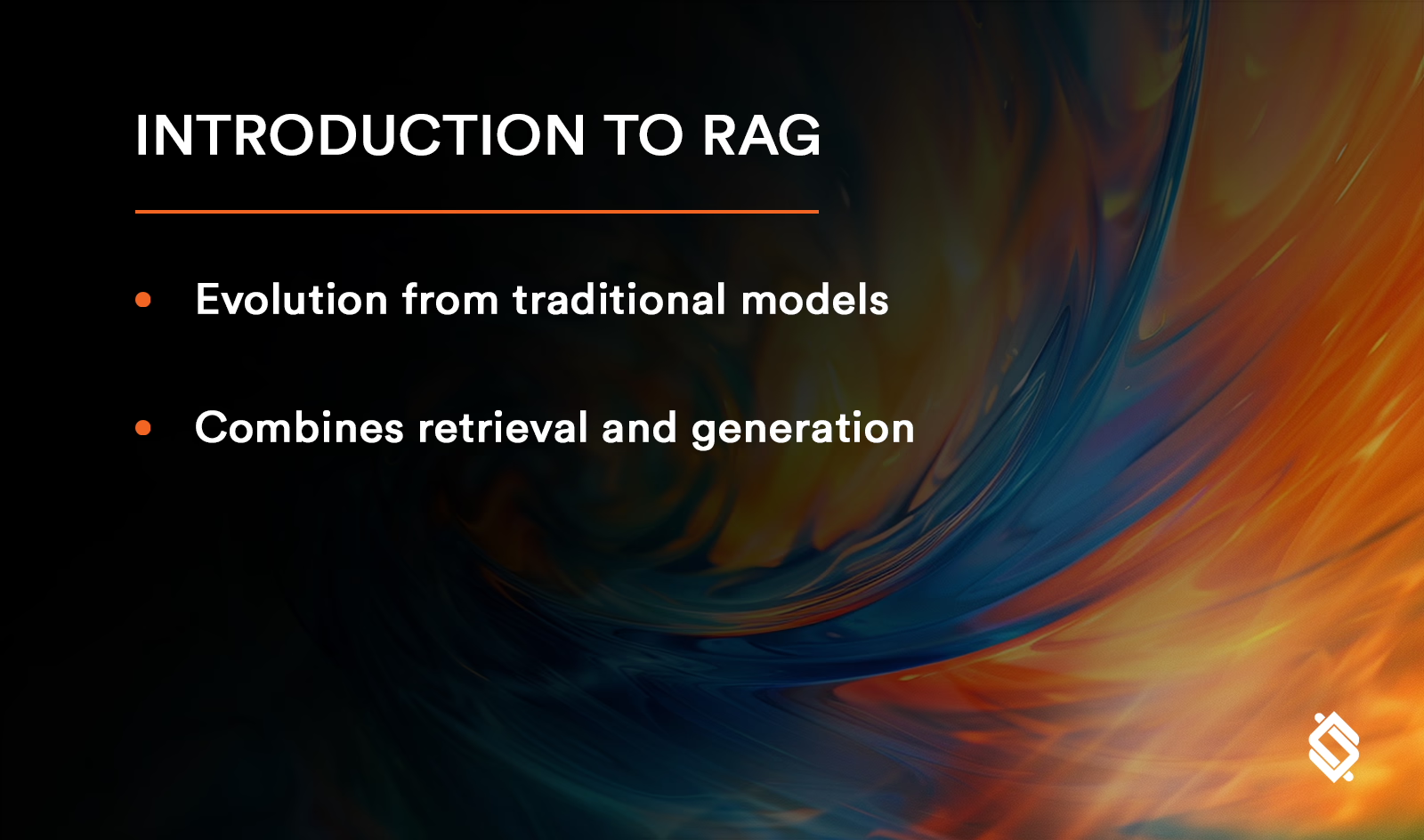
To appreciate the significance of RAG, it’s important to understand the evolution of question answering systems. Traditionally, these systems fell into two main categories: retrieval-based and generative models.
1. Retrieval-Based Models
These systems fetch relevant information from a pre-defined database or set of documents. They are adept at providing precise answers by locating existing information but are limited by the scope and quality of their database.
2. Generative Models
These AI models generate responses from scratch, based on their training data. While they offer more flexibility and creativity in responses, they sometimes produce less accurate answers, especially when dealing with specific queries.
RAG, however, blends these approaches to leverage the best of both worlds. It retrieves relevant information from external sources and then generates responses based on that information, resulting in more accurate and contextually appropriate answers.
What is RAG (Retrieval-Augmented Generation)?
![]()
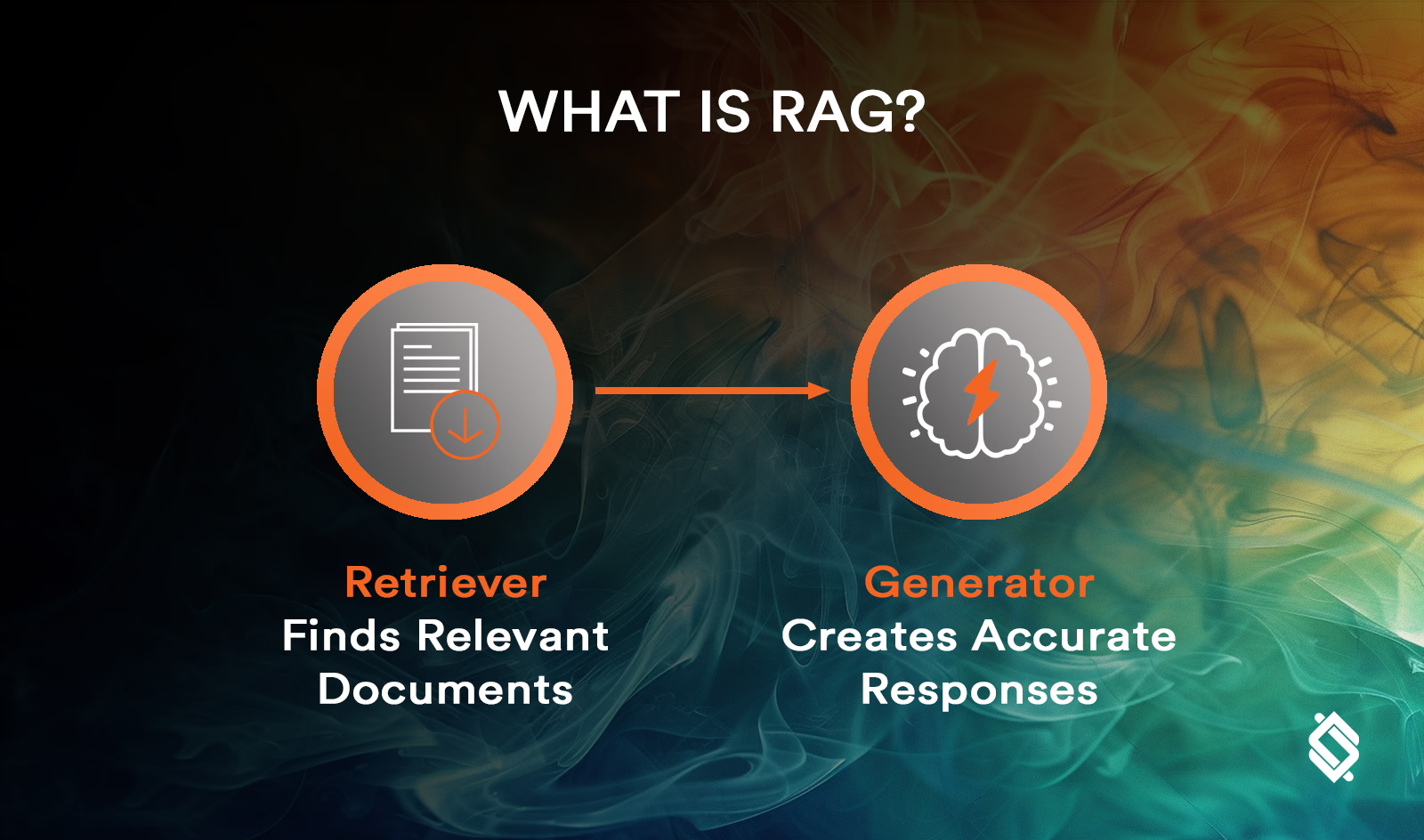
![]()
RAG, developed by Facebook AI, represents a significant leap forward in natural language processing (NLP). It consists of two main components:
1. Retriever
This component searches a vast corpus of documents to find relevant information related to the query. It functions similarly to a search engine, but it is fine-tuned to understand and locate precise data that can aid in answering specific questions.
2. Generator
Once the retriever has fetched the relevant documents, the generator synthesizes this information to produce a coherent and contextually accurate response. It uses advanced machine learning techniques to ensure the answer is not only relevant but also well-formed and easy to understand.
Facebook AI's Retrieval-Augmented Generation (RAG) Paper
Applications of RAG in Question Answering Systems
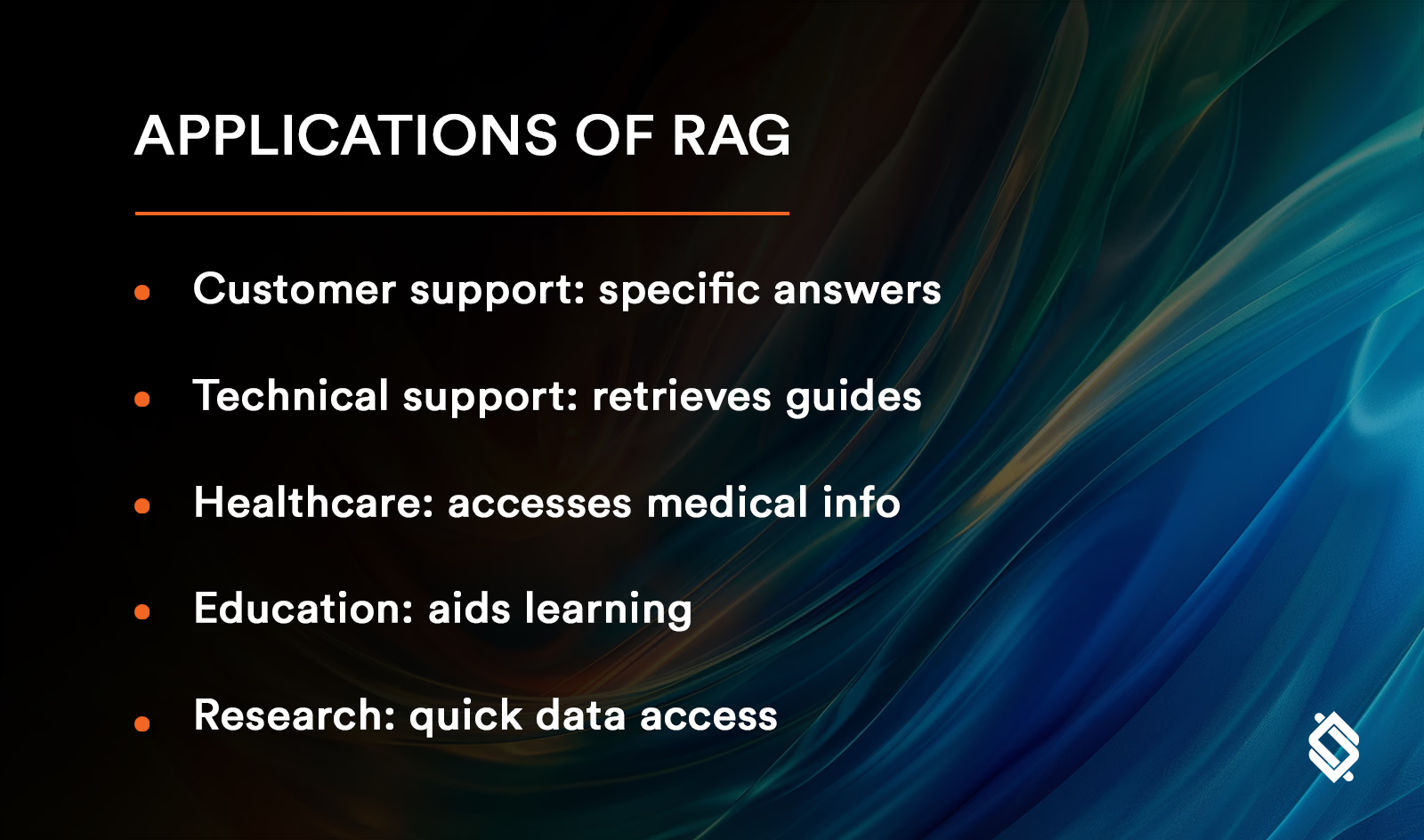
The applications of RAG in question answering systems are vast and varied, offering numerous benefits across different industries. Here, we delve into some of the key areas where RAG is making a significant impact.
1. Customer Support
One of the most common applications of question answering systems is in customer support. Companies can deploy RAG-powered chatbots to handle customer inquiries more efficiently and accurately. Unlike traditional chatbots that rely solely on predefined scripts, RAG can provide detailed and specific answers by retrieving up-to-date information from a company’s knowledge base or external sources.
For example, if a customer asks about the status of a product feature update, a RAG system can retrieve the latest development updates and provide a precise response. This leads to higher customer satisfaction and reduces the workload on human support agents.
RAG in Customer Support Case Study
2. Technical Support
In technical support scenarios, the complexity of queries can vary greatly. A RAG-powered system can assist support teams by retrieving relevant troubleshooting guides, documentation, and even user-generated content from forums. This ensures that the support team has access to the most comprehensive and relevant information, enabling them to resolve issues more effectively.
For instance, if a user encounters a specific error code, the RAG system can pull up detailed troubleshooting steps and related discussions from technical forums, providing a more holistic approach to problem-solving.
3. Healthcare and Medical Information
In the healthcare sector, access to accurate and timely information is crucial. RAG can be used to develop sophisticated question answering systems that assist both healthcare professionals and patients. These systems can retrieve and generate responses based on the latest medical research, clinical guidelines, and patient records.
A doctor, for instance, might use a RAG-based system to get quick answers to complex medical questions by retrieving relevant studies and medical literature. Patients, on the other hand, can benefit from reliable and accurate information about symptoms, treatments, and medication.
4. Education and E-Learning
Educational platforms can leverage RAG to provide students with detailed and accurate answers to their questions. Whether it’s explaining complex concepts or providing additional reading materials, RAG can significantly enhance the learning experience.
For example, an e-learning platform can use a RAG-powered tutor to assist students with homework questions by retrieving relevant textbook content, scholarly articles, and explanatory videos, thereby offering a more comprehensive learning aid.
5. Research and Development
In fields that require extensive research and development, such as pharmaceuticals, engineering, and technology, RAG can streamline the information retrieval process. Researchers can use RAG systems to quickly gather relevant data from vast datasets, patents, research papers, and industry reports.
This capability not only speeds up the research process but also ensures that researchers are working with the most current and relevant information, leading to more innovative and effective solutions.
Benefits of Implementing RAG
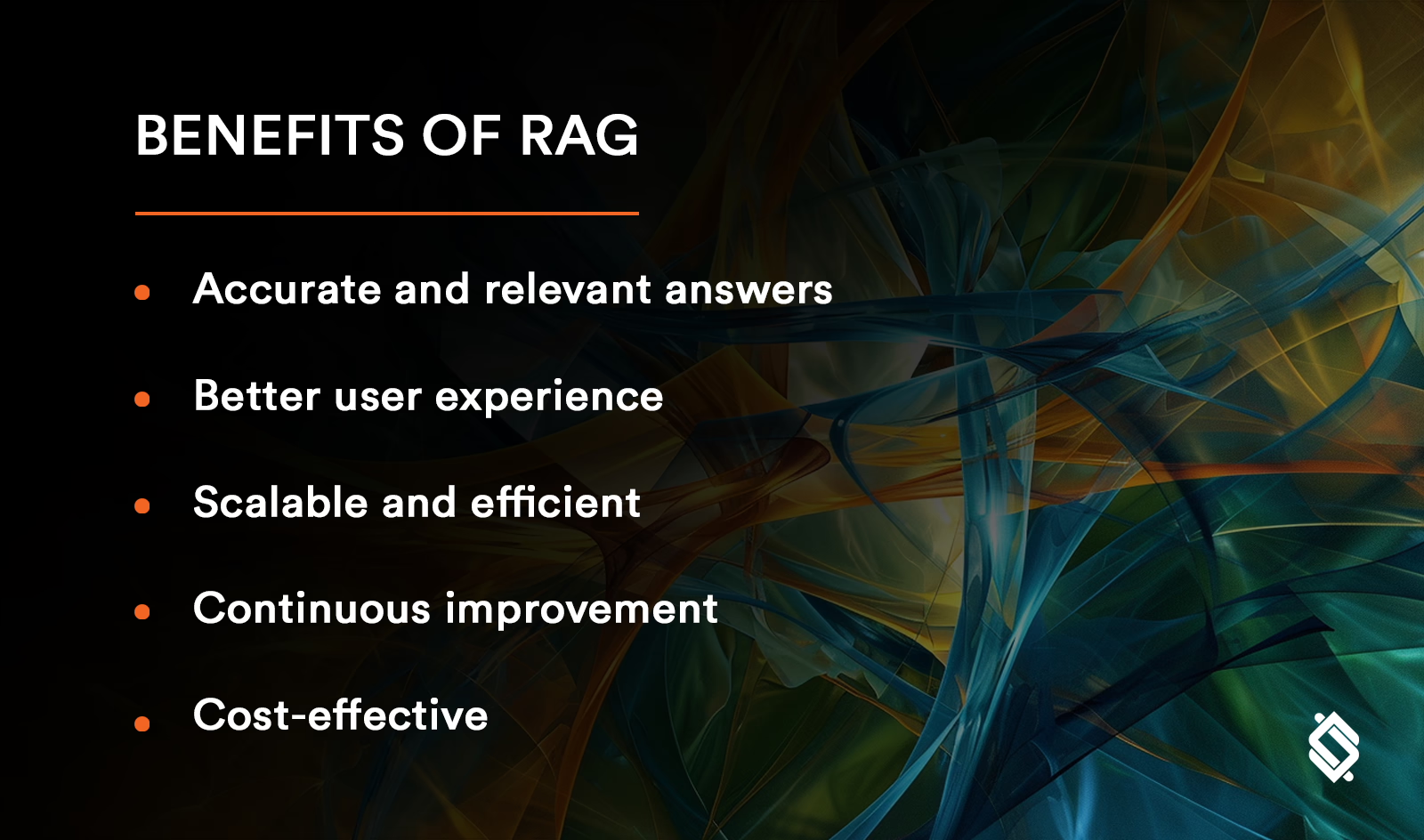
Implementing RAG in question answering systems offers several distinct advantages that can drive business success and operational efficiency.
1. Enhanced Accuracy and Relevance
RAG’s ability to retrieve and synthesize information ensures that the answers provided are both accurate and contextually relevant. This reduces the likelihood of misinformation and improves the overall quality of responses, which is particularly important in critical sectors like healthcare and finance.
2. Improved User Experience
By providing precise and informative answers, RAG enhances the user experience. Whether it’s customers seeking support, students asking educational questions, or professionals needing quick access to information, the reliability and depth of RAG’s responses lead to higher satisfaction and engagement.
3. Scalability and Efficiency
RAG systems can handle a large volume of queries simultaneously, making them highly scalable. This is particularly beneficial for businesses with high customer interaction rates, such as e-commerce platforms and service providers. Automating the response process with RAG not only improves efficiency but also allows human agents to focus on more complex and value-added tasks.
4. Continuous Learning and Improvement
RAG models can continuously learn and improve over time. As they process more queries and access a growing body of information, their ability to provide accurate and relevant responses enhances. This continuous learning loop ensures that the system remains up-to-date with the latest information and trends.
5. Cost Savings
Automating question answering with RAG can lead to significant cost savings. By reducing the need for extensive human intervention, businesses can lower operational costs while maintaining or even improving the quality of customer service and support.
Challenges and Considerations
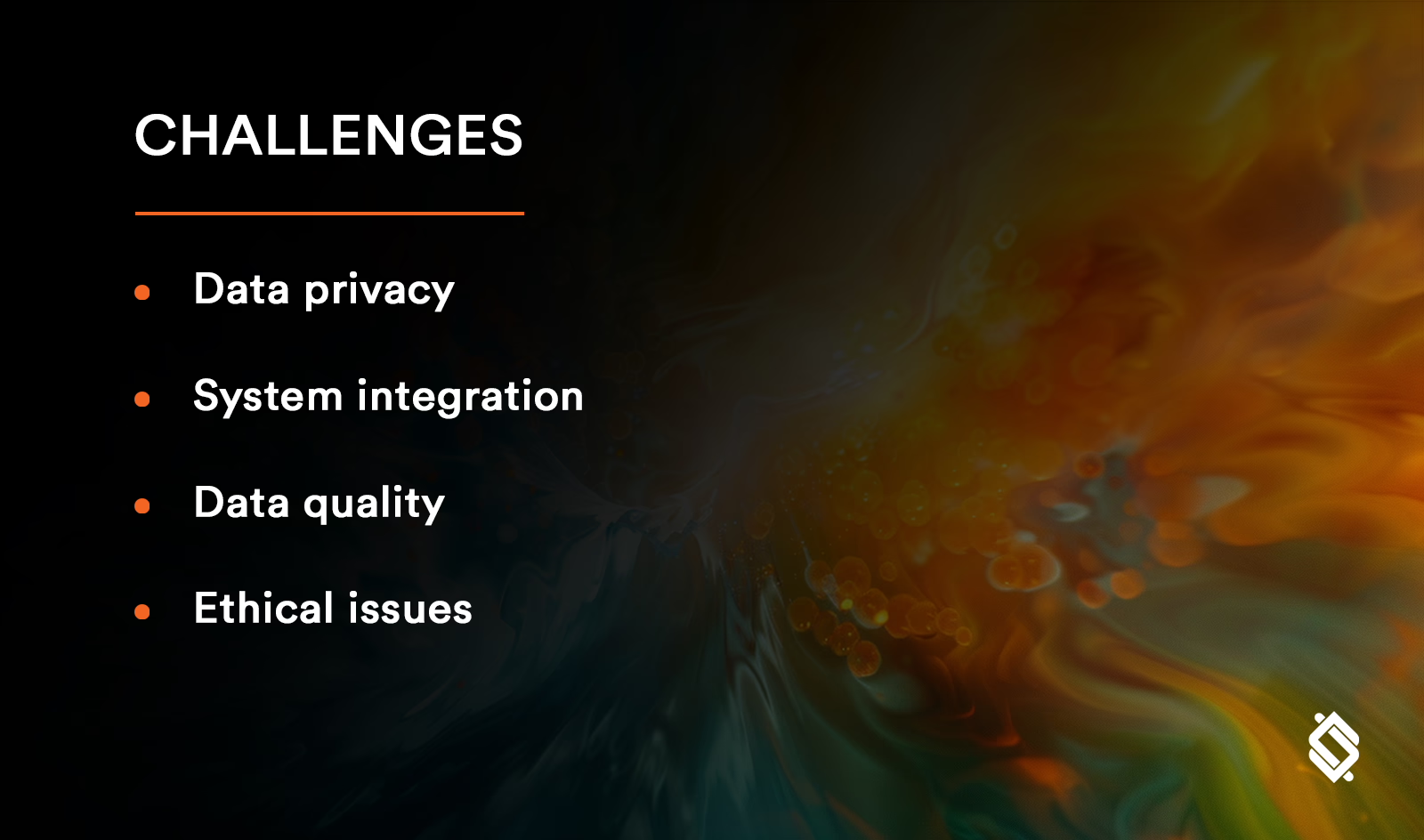
While RAG offers numerous benefits, it is important for technology leaders to be aware of the challenges and considerations associated with its implementation.
1. Data Privacy and Security
Given that RAG systems retrieve and process large amounts of data, ensuring data privacy and security is paramount. Businesses must implement robust security measures to protect sensitive information and comply with relevant data protection regulations.
2. Integration with Existing Systems
Integrating RAG with existing IT infrastructure can be complex and requires careful planning. Businesses need to ensure compatibility with current systems and processes, which might involve significant technical adjustments and resource allocation.
3. Quality of Data Sources
The quality of the data sources that RAG retrieves from is crucial. Poor quality or outdated information can lead to inaccurate responses. Therefore, businesses must curate and maintain high-quality data repositories to maximize the effectiveness of RAG systems.
4. Ethical Considerations
As with any AI system, ethical considerations must be taken into account. This includes addressing potential biases in the data, ensuring transparency in how the system operates, and implementing measures to mitigate any negative societal impacts.
Implementing RAG: Best Practices
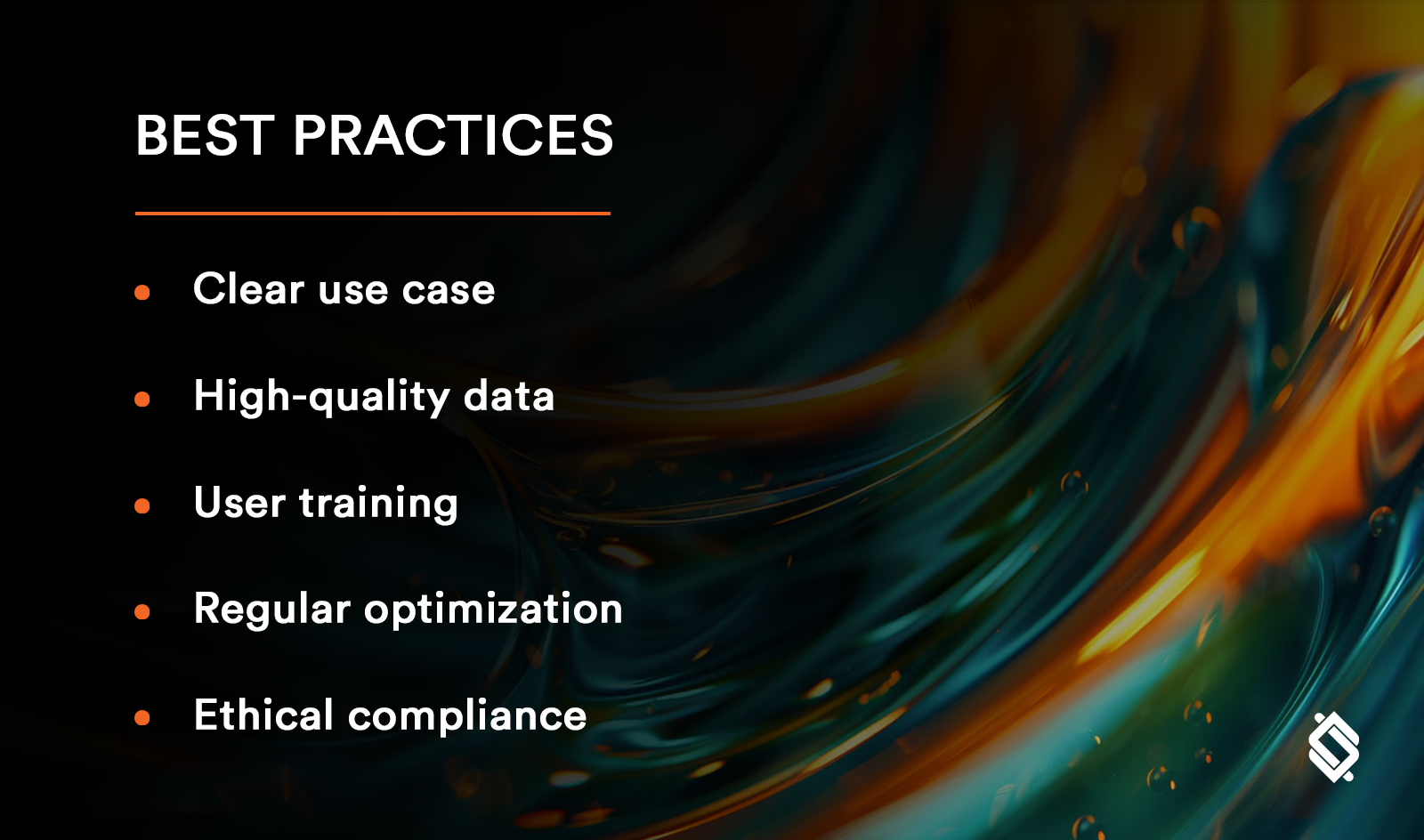
For technology leaders considering the adoption of RAG, following best practices can help ensure a successful implementation.
1. Start with a Clear Use Case
Identify a specific use case where RAG can provide the most value. This could be customer support, technical assistance, or any other area where accurate and timely information is critical. Starting with a clear use case helps in focusing efforts and resources effectively.
2. Invest in High-Quality Data
Ensure that the data sources used by the RAG system are of high quality, relevant, and regularly updated. This may involve curating proprietary data repositories or subscribing to reputable external data services.
3. Focus on User Training
Educate and train users on how to interact with the RAG system effectively. This includes understanding how to phrase queries to get the best results and knowing the system’s capabilities and limitations.
4. Monitor and Optimize
Continuously monitor the performance of the RAG system and gather feedback from users. Use this feedback to fine-tune the system, improve data sources, and update the underlying models to enhance accuracy and relevance.
5. Ensure Ethical Compliance
Implement ethical guidelines and practices to ensure that the RAG system operates fairly and transparently. Regularly review the system for biases and take corrective actions as needed to promote fairness and trust.
The Future of RAG in Question Answering
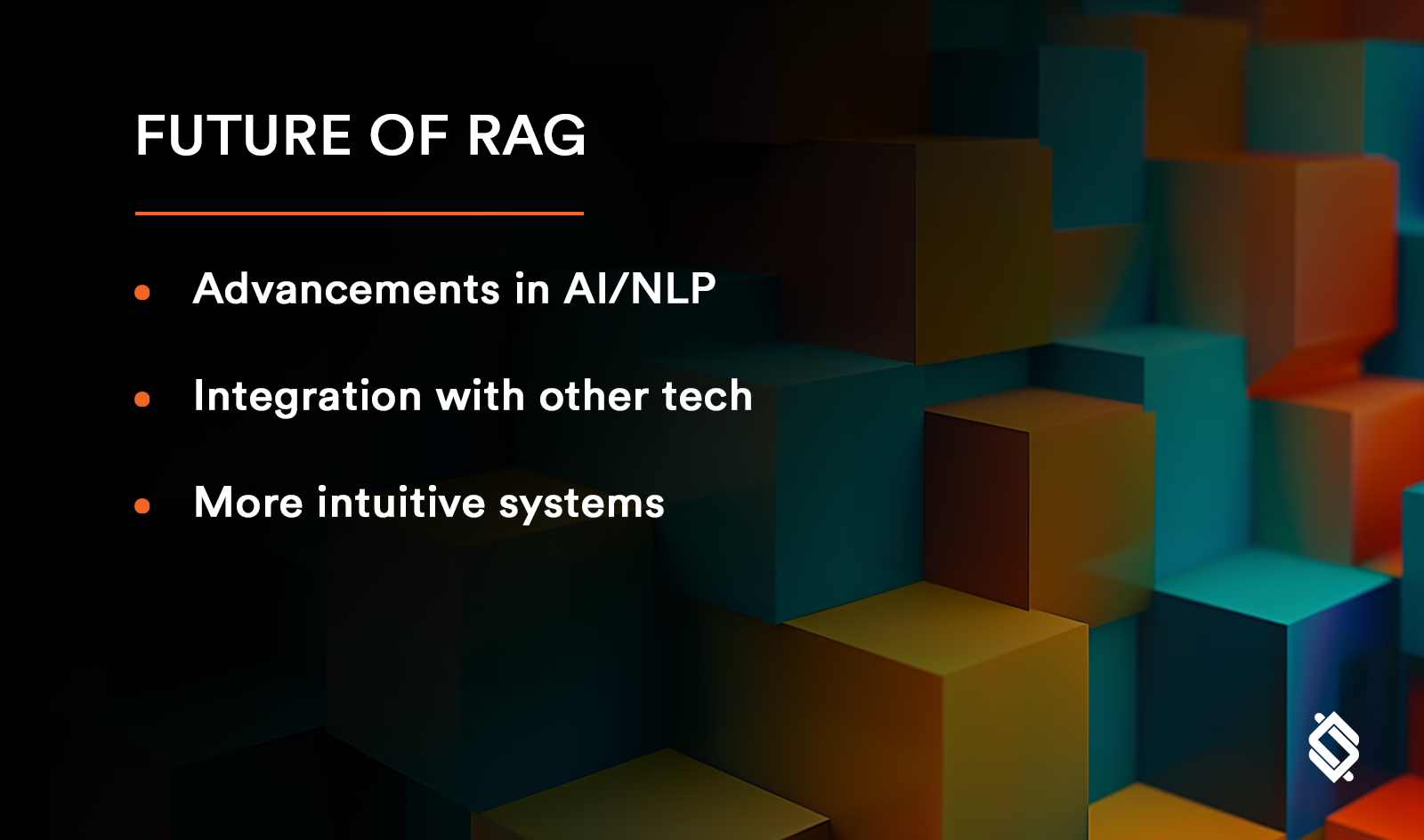
The future of RAG in question answering looks promising, with continuous advancements in AI and NLP technologies. As these systems become more sophisticated, their ability to understand and generate human-like responses will improve, leading to even more accurate and helpful answers.
Moreover, the integration of RAG with other AI technologies, such as natural language understanding (NLU) and machine learning, will unlock new possibilities and applications. For example, combining RAG with voice recognition could lead to highly intuitive and interactive voice-activated assistants.
In conclusion, embracing RAG in question answering systems offers technology leaders a powerful tool to enhance information retrieval, improve user experiences, and drive operational efficiency. By understanding its benefits, challenges, and best practices, businesses can effectively implement RAG and stay ahead in the competitive landscape of AI-driven solutions.



